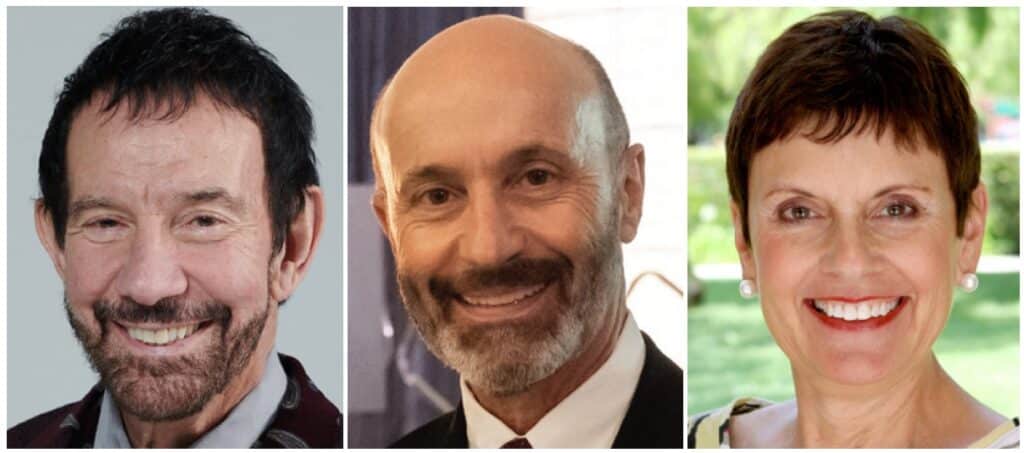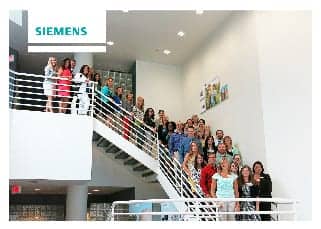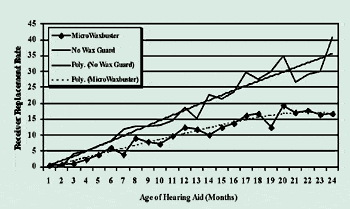Even in the era of over-the-counter (OTC) hearing aids, all healthcare professionals know diagnosis first, treatment second.
By Ron Leavitt, AuD, Douglas L. Beck, AuD, and Carol Flexer, PhD
The need for services provided by Hearing Care Professionals (HCPs, including audiologists and hearing instrument specialists) may increase in the OTC era. That is, patient/client-based (hereafter referred to as “patient”) self-diagnosis, self-fitting, and self-directed aural rehabilitation programs may alter the patient-HCP dialogue, relationship, and outcomes. As patients obtain hearing aids without the benefit of professional services, their self-reported and subjective observations may supplant rigorous and patient-safety-based Best Practice (BP) approaches (including appropriate diagnostic tests, listening and communication evaluations, real-ear measures, speech-in-noise tests, appropriate counseling, referral, and technology selection) suggested by the American Academy of Audiology (AAA),1 the American Speech-Language-Hearing Association (ASHA),2 and the International Hearing Society (IHS).3
Bypassing the HCP may (in some cases) result in the HCP working with patients to “troubleshoot after the fact.” However, as all healthcare professionals are aware, the most efficient use of time and resources pivots on the adage, “Diagnosis first, treatment second.” There is no substitute for an early and accurate diagnosis in any healthcare arena. Bypassing the professional carries an increased risk for the patient and is of significant importance. Self-diagnosis and self-treatment protocols appear incompatible with AAA, ASHA, and IHS BP models for adults with hearing loss who seek amplification. For the OTC patient, early identification and professional treatment for hearing and Suprathreshold Listening (STL) disorders are less likely to occur, as subjective impressions of hearing loss and amplification “success” will prevail among OTC patients.
Hearing versus listening
As often happens in professional offices and casual conversations, people use the word “hearing” as simply perceiving or detecting sound, whereas “listening” is comprehending, or making sense of sound. Specifically, in challenging and noisy listening situations, people with mild-to-moderate hearing loss can detect sound; that is, they can “hear.” The greater challenge patients often face is the inability to understand speech in noise, which is in many respects, a listening problem.
Of note, the ability to listen is built on a foundation of hearing and often pivots on the signal-to-noise ratio (SNR). The SNR may be defined as the difference in loudness between the primary signal and the secondary background sounds.
There are some 38 million people in the USA with hearing loss which would be apparent on an audiogram. However, there are an additional 26 million people with functional or suprathreshold listening (STL) disorders, such as speech-in-noise problems and other hearing difficulties, despite normal audiometric thresholds.4,5
Hearing is easily represented on an audiogram that plots detection thresholds (in decibels) across frequencies, typically from 250 to 8,000 Hz. Importantly, pure tone thresholds, especially for the most common hearing losses such as mild-to-moderate sensorineural hearing loss, avail limited information regarding functional hearing as people do not listen to pure tones in the real world, and conversations rarely occur at threshold levels. The functional ability to listen and participate in real-world conversations occurs at STL levels.
That is not to say pure tone thresholds don’t matter, they do, but they are only the first step in understanding the patients’ complete audiometric profile. Audiograms are extremely useful to diagnose otologic conditions and to understand what the patient can hear. Audiograms can demonstrate and document asymmetries, presbycusis, noise-induced hearing loss, fluctuating hearing loss, otosclerosis, and more. Audiograms are very important in many regards, but they tell us almost nothing about functional hearing and the brain’s listening ability.
[Thought experiment 1: Imagine if we were to document the intensity threshold of light required to see various colors across the visual spectrum. That “visiogram” would likely tell us how intensely different colors need to be perceived, yet it would relay nothing about one’s ability to read, their depth perception, or the ability to recognize visual images.]
Listening is a learned skill and a top-down brain activity. As such, STL is more analogous to information processing or central hearing than it is to pure tone thresholds. Listening is more of a whole-brain event involving the integration of hearing, psychology, cognition, vocabulary, education, training, memory, emotion, interaural loudness and interaural timing differences, head shadow effects, and more. Hearing is easy to measure via audiograms. Unfortunately, listening measures are always incomplete and difficult to measure. Listening is a highly developed, practiced, and learned skill unique to humans and arguably unique to each human. Listening might be thought of as the primary goal of the human auditory system.
Multiple articles and publications have documented correlations between hearing loss and associated comorbidities, including social isolation, depression, loneliness, anxiety, general health degradation, and cognitive decline. We agree with the premise that as hearing loss increases, so too does the opportunity for concomitant sequelae, including cognitive decline.6
As The Lancet (April 2023) noted, “With the postulation that up to 8% of dementia cases could be (potentially) prevented with proper hearing loss management, our findings highlight the urgent need to take measures to address hearing loss to improve cognitive decline.”6
However, had previous publications and protocols evaluated listening ability (rather than pure tone detection), we, the authors, pose the question—Would the correlation between listening and cognitive decline be even greater than those reported for hearing and cognition?
Speech in noise
SIN concerns may facilitate in-depth after-the-fact problem-solving opportunities for the professional HCP, as the most common reason patients seek counsel from HCPs is functional ability. More specifically, the reason most patients seek our help is the inability to understand speech-in-noise (SIN). As such, one might argue that SIN is more of a listening problem than a hearing problem. As such, it is possible that patients who seek OTC hearing aids believe their problem is hearing loss, yet it may be an undiagnosed functional problem such as speech in noise problems (which may align with the 26 million people noted above). Some OTC patients may achieve an improved SIN ability, while others may not for various reasons, including:
The majority of OTC products depend on dome fittings, which allow noise to enter the ear canal unabated.
Although OTC products make sounds louder, louder does not necessarily improve the signal-to-noise ratio (SNR).
SNR expectations/improvements are not part of the OTC in-the-box or on-the-box labeling.
Some OTCs may not stay positioned in the ear (as intended) using generic earmold plumbing systems.
Beyond OTC and high-tech premium hearing aids, various prescription-based entry-level and mid-level products offer advanced programming and communication options to fit specific patient needs. These products are often in the same price range as OTC products yet, may be professionally dispensed with closed/vented earmolds, directional and/or beam-former microphone arrays, FM systems, digital remote microphones, Bluetooth wireless streaming systems, loop systems, telecoils, assistive listening devices, and more, all of which are already part of the daily HCP problem-solving armamentarium, and few of which will be familiar to the OTC patient.
When patients complain and seek help based on his/her inability to understand SIN, we recommend that the same rigorously determined BP models from AAA, ASHA, and IHS should be applied. Although the patient may have presented to the HCP due to OTC problems/concerns, it appears our professional liability and responsibility remain unchanged. Unfortunately, without appropriate BP-based comprehensive tests, our ability to manage or refer is greatly reduced. Although some HCPs, insurers, and patients may argue that the previously prescribed BP adult test batteries are unnecessary in the OTC era, patient safety and timely referrals remain of paramount importance. Therefore, we urge maintenance of the time-tested and highly regarded BP models and protocols for all patients.
[Thought experiment 2: If one were to conclude that the previously prescribed HCP BP protocols are unnecessary in the OTC era, one might also conclude that routine medical diagnostic procedures (such as PAP smears, PSA evaluation, CBC, mammograms, blood pressure checks, EKG, EEG, Ultrasound, CT, MRI, PET scans, and more) for people who “feel fine” and have no signs or symptoms of disease are also questionable.]
Our position is that peer-reviewed and outcomes-based BP protocols make sense, are highly desirable, and should be maintained by licensed HCPs while addressing OTC era and prescription amplification patients. That is, the retail acquisition avenue and price range of OTC products should not alter professional BP protocols.

Speech in noise and cognition
Although AAA, ASHA, and IHS BP models recommend SIN testing, it appears that across the USA, perhaps only one in five HCPs follow these guidelines. SIN protocols are one of the few functional measures of listening in noise assessed in BP audiometric test batteries. SIN evaluations did not get substantial traction in the pre-OTC era despite Carhart and Tillman (50+ years ago) advocating for SIN testing to be part of the standard audiological evaluation.7
Moore et al.8 reported that among middle-aged people with poorer SIN ability, their attenuated SIN ability could be an early warning (i.e., a red flag) indicating a need for intervention. Beck and Benitez9 published a free, two-minute SIN protocol to complement a vast array of excellent and readily available SIN tests such as the HINT, Quick-SIN, the BKB, AZ Bio, and more.
Stevenson et al.10 reported 82 thousand dementia-free participants in the United Kingdom Biobank cohort. Participants were 60 years and older and were observed for 10 years (median). Of those, across the decade (or so) of participation, 1,285 participants developed dementia. It was reported that participants with insufficient and poor SIN abilities demonstrated an increased risk of developing dementia over the study period. The reported Hazard Ratio for participants with poor SIN ability was 61% (according to the National Cancer Institute, a Hazard Ratio measures how often an event happens in one group, as compared to another, over time).
Roup, Custer, and Powell11 examined self-perceived hearing ability and binaural speech-in-noise performance. They concluded that a speech-in-noise test should be obtained to provide a simple and efficient measure to identify suprathreshold listening disorders in adults with normal pure tone sensitivity.
Untreated hearing loss
Audiologists and Hearing Instrument Specialists understand the importance of a comprehensive evaluation and the need to diagnose prior to treatment. HCPs test, refer, and manage based on the results of well-established BP protocols in tandem with professional or significant other (SO) or career observations. Unfortunately, for patients of the OTC era, a differential diagnosis, professional guidance, referral, and professional management are less likely to be available.
Beck and Harvey12 note that people with hearing loss have a 24% increased risk for incident cognitive impairment. Lin et al.13 report that cognitive impairment is linearly associated with the severity of the hearing loss. Golub et al.14 report as hearing loss increases, measurable aspects of cognition decrease in a clinically meaningful way. They reported an independent association between cognition and subclinical hearing loss which indicates that an association between hearing and cognition may occur earlier than previously anticipated and may occur while thresholds are still within normal limits.
Deal et al.15 reported moderate/severe audiometric hearing loss was associated with an increased risk of incident dementia over 9 years (hazard ratio:1.55) when compared to people with normal hearing. Of 1,889 participants with a mean age of 76 years, 1,103 had hearing loss; of those, 387 had moderate/severe hearing loss. The authors concluded that moderate/severe hearing loss was associated with a 55% increase in the risk of incident dementia across their 9 years of study in a bi-racial cohort of men and women aged 70–79 years at baseline.
Jafari et al.16 report that as hearing loss increases, it may have significant consequences on social isolation, verbal communication, functional measures of hearing and listening, psychological well-being, and more. The authors report the advantages of amplification to alleviate hearing handicap, depression, and tinnitus and to improve cognition, social communication, and quality of life.
Amieva et al.17 report that “self-reported hearing loss” was significantly associated with lower baseline cognitive screening scores and was associated with a greater decline in cognitive screening scores during the 25-year study. Further, people with hearing loss who wore hearing aid(s) demonstrated no difference in cognitive decline as compared to controls. However, people with hearing loss who did not wear hearing aids demonstrated accelerated cognitive decline.
Shan et al.18 performed a meta-analysis on 25 peer-reviewed high-quality studies and concluded “…adult-onset hearing loss is (significantly) associated with unemployment.”
OTC hearing aid fittings and long-term outcomes
Because OTC products are rarely submitted to BP protocols, the acoustic outcome (gain, compression, output, etc.), the functional outcome, and the audiologic appropriateness of these fittings over the long term remain essentially unknown.
Discussion
The literature shows cognitive, vocational, social, educational, anatomic, physiologic, general health problems, and more are associated with untreated hearing loss and STLDs. It seems insufficient, premature, and unfortunate to trust self-diagnosis and self-care to identify and treat these significant health issues. As such, when OTC patients present to the HCP, it appears incumbent on the professional to identify and solve the problem through established BP protocols. It has not been our goal to debate the wisdom of OTC era legislation. That ship has sailed.
Rather, our goal has been to address the importance of professional HCP management of the OTC era patient based on previously established and outcomes-based BP models and protocols. Unfortunately, OTC era legislation encourages people with perceived hearing loss to embark on their hearing care journey alone. The impact of those solo journeys will not be revealed for many years to come.
As HCPs, we believe the best course of action to serve OTC era patients seeking assistance is to continue to employ BP models and protocols to provide excellent healthcare and outcomes and to demonstrate SIN and other functional and audiometric benefits obtained through professional amplification selection and fitting protocols.HR
Author Bio

Ron Leavitt, AuD, owns a practice in Corvalis, Ore, and is the founder of the Oregon Association for Better Hearing, a nonprofit consumer test group for hearing aid users.
Douglas L. Beck, AuD, is vice president of clinical sciences at Cognivue, and the former vice president of academic sciences at Oticon. Beck is an adjunct clinical professor of communication disorders and sciences at the State University of New York at Buffalo and serves as senior editor of clinical research for The Hearing Review.
Carol Flexer, PhD, is a distinguished professor emeritus of audiology, an international lecturer in pediatric audiology, an author of more than 155 publications, including 17 books, and a past-president of the American Academy of Audiology.
References:
- American Academy of Audiology (AAA). Standards of Practice for Audiology
Published June 2012 updated April 2023. - American Speech Language Hearing Association (ASHA). Preferred practice patterns for the profession of audiology. December 21, 2006.
- International Hearing Society. Best practices recommendation for fitting and dispensing
hearing aids. March 3, 2020. - Beck, DL. & Danhauer, J. Amplification for Adults with Hearing Difficulty, Speech in Noise Problems, and Normal Thresholds. Journal of Oto-ENT Research. Vol 1, Issue 1, 2019.
- Papesh, MA., Fowler, L., Pesa, SR, & Fredericka, SR. Functional Hearing Difficulties in Veterans: Retrospective Chart Review of Auditory Processing Assessments in the VA Health Care System. American Journal of Audiology, Vol. 32;101–118, March 2023.
- Jiang, F., Mishra, SR., Shrestha, N., Ozaki, A. et al. Association Between Hearing Aid Use and All-Cause and Cause-Specific Dementia: An Analysis of the UK Biobank Cohort. The Lancet Publica Health 2023;9:329-38.
- Carhart, R. & Tillman, TW. Interaction of Competing Speech Signals with Hearing Losses. Archives of Otolaryngology. 1970; 91(3);273-279.
- Moore, DR., Edmondson-Jones, M., Dawes, P., Fortnum, H., McCormack, A., Pierzycki, RH., Munro, KJ. Relation between speech-in-noise threshold, hearing loss and cognition from 40-69 years of age. PLoS One. 2014;Sep 17;9(9):e107720.
- Beck, DL. & Benitez, L. A Two Minute Speech in Noise Test. Protocol and Pilot Data. American Academy of Audiology. Audiology Today. May/Jun. 2019.
- Stevenson JS, Clifton L, Kuźma E, Littlejohns TJ. Speech-in-noise hearing impairment is associated with an increased risk of incident dementia in 82,039 UK Biobank participants. Alzheimers Dement. EPub July 2021. March 2022;18(3):445-456.
- Roup, CM., Custer, A. & Powell, J. The Relationship Between Self-Perceived Hearing Ability and Binaural Speech-in-Noise Performance in Adults With Normal Pure-Tone Hearing. ASHA Perspectives. 2022;6(5). 2022(10);1085-1096.
- Beck, DL. & Harvey, M. Issues in Cognition, Audiology, and Amplification: An update on what current science says about cognitive decline and hearing loss. The Hearing Review. January 2021.
- Lin, F., Yaffe, K., Xia, J., et al. Hearing Loss and Cognitive Decline in Older Adults. JAMA Internal Medicine. 2013;173(4):256.
- Golub JS., Brickman AM., Ciarleglio AJ., Schupf N., Luchsinger JA. Association of Subclinical Hearing Loss With Cognitive Performance. JAMA Otolaryngol Head Neck Surgery 2020;146(1):57–67.
- Deal, JA., Betz, J., Yaffe, K., Harris, T., et al. Health ABC Study Group, Hearing Impairment and Incident Dementia and Cognitive Decline in Older Adults: The Health ABC Study, The Journals of Gerontology. Vol 72. 2020;(5);(703–709).
- Jafari Z, Kolb BE, Mohajerani MH. Age-related hearing loss and tinnitus, dementia risk, and auditory amplification outcomes. Ageing Res Rev. 2019:(12);56:100963. Epub 2019;(9);23.
- Amieva, H, Ouvrard, C., Giulioli, C., Meillon, C. Rullier, L. Dartigues, JF. Self-Reported Hearing Loss, Hearing Aids, and Cognitive Decline in Elderly Adults: A 25-Year Study. 2019. Available at; https://doi.org/10.1111/jgs.13649
- Shan A, Ting JS, Price C, Goman AM, Willink A, Reed NS, Nieman CL. Hearing loss and employment: a systematic review of the association between hearing loss and employment among adults. J Laryngol Otol. 2020;134(5):387-397.






Speech-in-noise is rightly a priority for diagnosis and fit. The lower frequencies (traffic, room boom etc) might compromise perception – I know this well as a time-served soundtrack recordist.
However, Zhang et al in 2010 demonstrated that some patients do benefit from extended lows. They point out (as I never tire of doing!) that few hearing aids are effective below 125 Hz. Yet current transducers (mic and speaker) are capable down to 40. Mine, thanks to a star of an audiologist thinking outside the chart, are.
My observation is similar to Zhang’s: typical procedures still don’t assess frequencies below 250 Hz. Why so? And indeed, related to that, what about music: two octaves ignored!